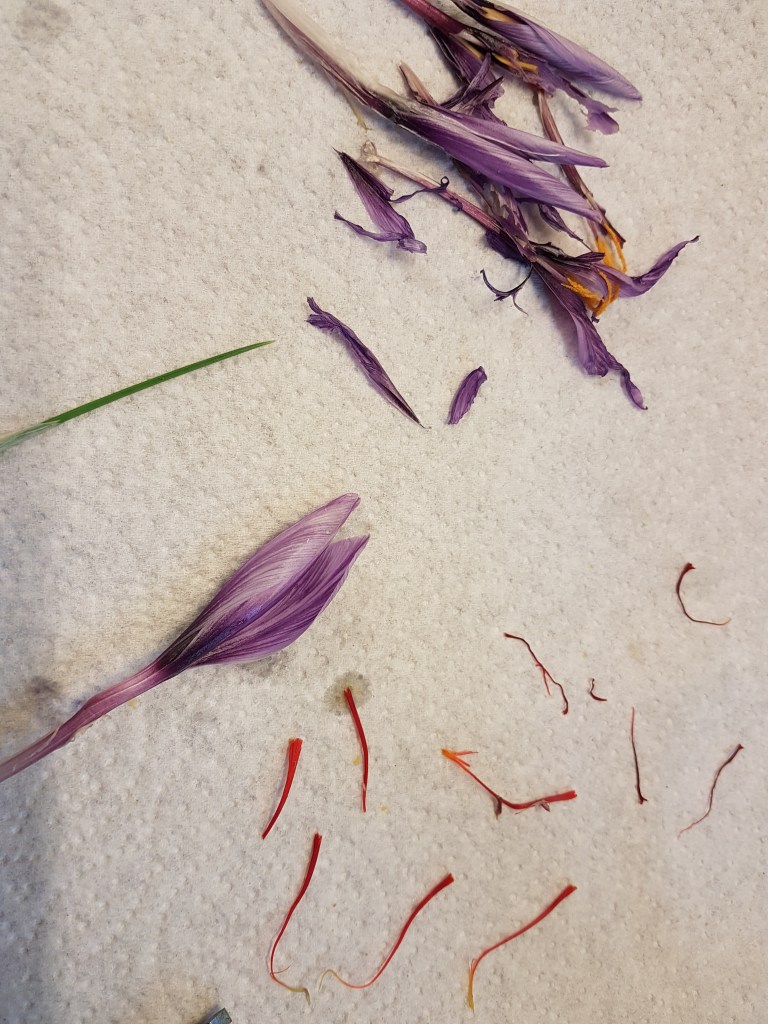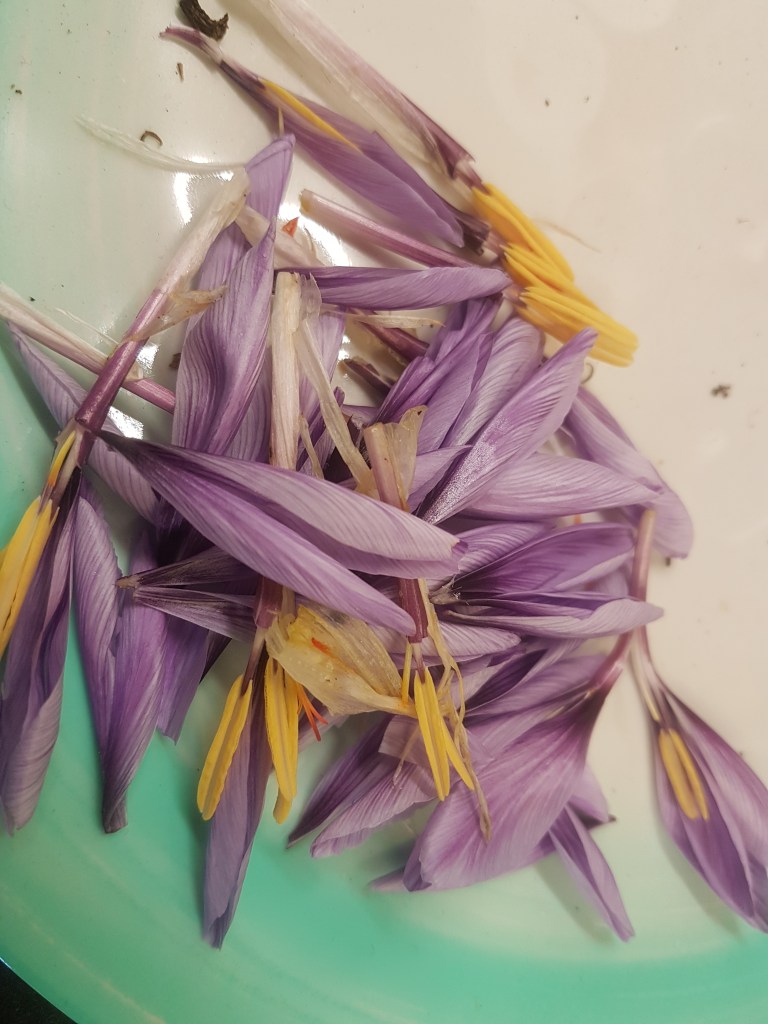With a bit of luck my last post sold you on the joys of growing saffron. Now for the nitty-gritty.
I can’t pretend this is a crop for a very small garden, though you might try growing it in a lawn or a regular bed like any other crocus. If you do, please be warned: only the stamens from the saffron crocus (Crocus sativus) are edible. Do not be tempted to taste any other variety. If you already have other crocus growing in the garden, make absolutely sure you have the saffron species in a separate place.

You’ll need fertile ground in full sun, but saffron bulbs aren’t outrageously fussy – as long as it’s not really claggy clay soil they’ll be reasonably happy. If you have clay, add some organic matter, like farm manure, to break it up.
Corms. You’ll need to buy the real thing, from a reputable supplier. I got caught out buying cheap corms from the back pages of a gardening mag. They grew fine, but were too small to ever flower. I had them for 7 years before I realised they were just going nowhere very, very slowly.

My best pal bought me a bag of commercial grade corms from professional supplier Roco for my birthday. It was probably the best gift she’s ever given me, and that’s truly saying something. She bought me 50 bulbs; each crocus usually yields 3 stamens but believe me 150 stamens dries down to very little – just a few spectacular dishes.
Planting time is a bit unusual for plants we tend to associate with spring, but some crocuses flower in autumn and Crocus sativus is one of them. I planted mine in mid-August.

Plant them about 15cm deep and a similar distance apart (I actually placed mine a bit deeper than that; the last thing I wanted to do was supply the local squirrel population with a very expensive event…) and – well that’s it.
Nothing happens for a month or so, then a few spindly leaves appear. The flowers start coming in the last couple of weeks in October and continue until mid November, a couple a day, which means harvesting a couple of blooms every morning. This isn’t always appealing given November weather. There is a reason why this stuff is worth its weight in gold.

Ideally, get to them before they open, pick the whole bud neatly from the stem. When you get them home, dismember the flower, saving the three golden stamen-threads, which you’ll need to dry. Chuck out the pretty bits. It’s brutal.

I put them on a piece of kitchen roll to dry, then keep them somewhere dark and dry to mature.

One more word of advice: The Event isn’t yet!
When they’re first harvested, saffron threads are tasteless. They need to be left at least a month before they start to develop flavour and the longer you leave them the more flavoursome they become. The ideal would be to harvest one year and keep them until the next harvest, but I’ve never managed that.

In my first year I was so delighted that I found a couple of tiny wooden. brass-inlaid boxes on ebay, and gave one, with some precious saffron strands in it, to my best pal for Christmas. I kept the other one for me, as a treasured Event. Here is my special-event Saffron Box.

My favourite Event last year, made in August, was Saffron Ice Cream, as found in Pardiz, a fabulous Persian cook book, bought for me as another birthday present by my wonderful best pal. Stupidly I forgot to take photos but it was well worth the wait…
Not sure I could be brutal enough to destroy all those flowers…..
LikeLike
Indeed, and you can just let them grow as ornamentals. Though of course the birds might not have such qualms!
LikeLike
please do your homework better. It is the bright red stigmas (girl parts) that are harvested for saffron- NOT the stamens.
LikeLike